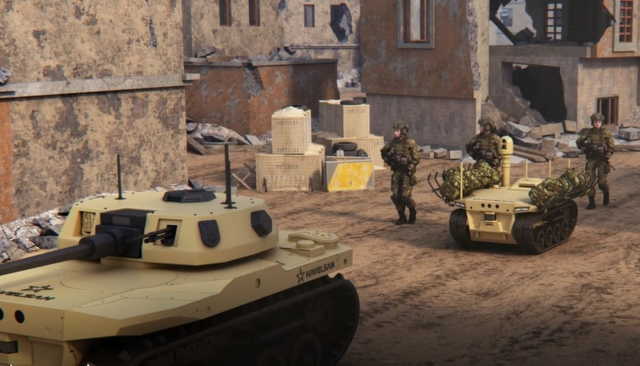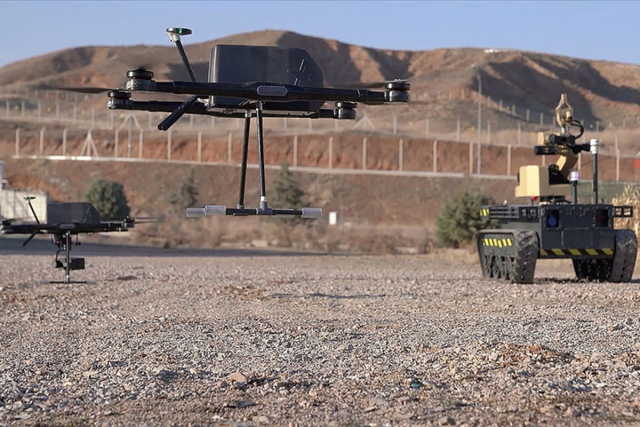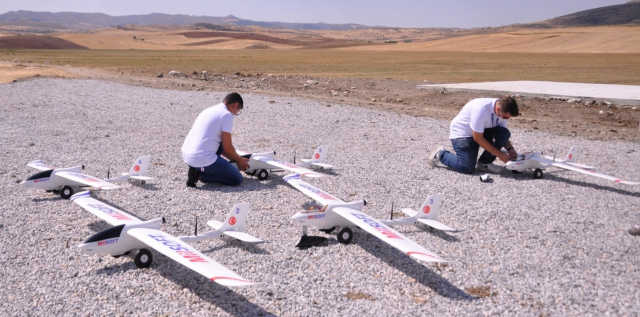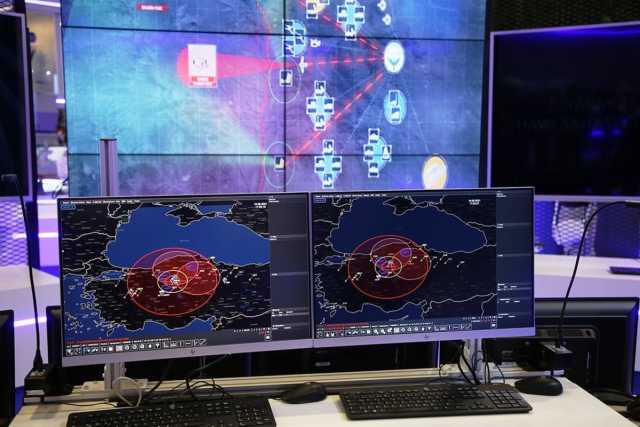Following in line with modern trends in the development of military affairs, the leadership of the Armed Forces of Turkey is making active efforts to digitalize the troops.
According to foreign military experts, the term "digitalization" is a broader concept than the simple use of digital technologies in the management of conventional combat elements. Today, "digital troops technologies" include the development and implementation of sets of modern equipment for a single serviceman (the generally accepted designation "digital soldier", or "soldier of the future"), robotic systems for military purposes, as well as a wide range of automated control systems (classes from C2 to C6). At the same time, due to the involvement of artificial intelligence (AI), their mutual adaptation and integration should be ensured. As a logical outcome of "digitalization", the creation of a future combat environment (Future Warfare Environment) is considered – an absolutely functional system of systems that guarantees the optimal application of the "sensor – shooter" principle.
Currently, the availability of robotic systems is one of the key characteristics of modern armed forces. In industrialized countries, stable associations of research and industrial organizations have formed around their design and development, as well as the study of methods and tactics of application, the activities of which, as a rule, are supervised by the defense institutes of the respective states.
As a highly developed industrial and military power, Turkey strives to maintain its position in the production of modern weapons. It is obvious that the development of robotic systems for military purposes has not been left without the attention of interested departments. With the support of the Turkish Defense Industry Administration (SSB) and the Turkish Army Fund, specialized research and development work (R&D) is carried out not only by national giants of the defense industry, but also startups actively created on the basis of university technopolises, as well as small and medium-sized enterprises.
The activities of Turkish companies in the field of military robotics can be divided into two main areas: the design of individual robotic complexes (RTK) and the development of appropriate software and communication systems. At the same time, the designed RTCs are designed for actions in all physical spheres of modern armed confrontation (air, land, sea). Software developments are designed not only to support the functionality of single human-controlled products, but also the possibility of autonomous and group use of RTK. The latter aims to implement a complex enemy attack using swarm tactics and implies the broad participation of AI.

Havelsan Company. Model of interaction between RTK and personnel
Swarm technologies for the Turkish Armed Forces
The exhibitions held can be considered an obvious criterion of success in a particular field. One of the latest demonstrations of the success of the Turkish military-industrial complex took place in Istanbul, in the period from August 17 to 21, 2021, as part of the IDEF 21 exhibition. In the field of development of technologies for controlling groups of unmanned vehicles, observers noted the results achieved by the Turkish companies Havelsan, MilSOFT and STM.
Thus, a special unit "New Unmanned technologies" has been formed in the HAVELSAN structure. According to its head Mehmet Akif Nakar, the division is primarily focused on swarm technology for the next generation of unmanned vehicles. It is claimed that the algorithms being developed allow one unmanned product to "know" the location, task and distance to another unmanned vehicle. As a result, the unmanned platforms will not only be coordinated with each other, but will also be able to jointly perform various tasks. Such interaction of various platforms – in the air, on land, above or under water – is known as "herd intelligence".

Demonstrators from Havelsan. "Digital troops"
As part of the swarm-related R&D, HAVELSAN presented its concept of "Digital Troops" for the first time at IDEF 21. Its demonstrators were the BARKAN autonomous ground attack RTK and the BAHA and M6 autonomous unmanned aerial vehicles (UAVs) for vertical takeoff and landing. According to HAVELSAN specialists, thanks to the developed algorithms, the presented unmanned platforms, acting in different environments, are able to perform joint operations.
For the first time, MilSOFT engineers presented their swarm system in November 2020. It consisted of 5 drones, but in the simulation environment it also functioned with 25 drones. According to the idea of MilSOFT specialists, the group of unmanned vehicles created by them is not only "trained" to conduct reconnaissance and monitor areas and objects, but also to provide target designation or direct defeat of designated targets.

Preparation of the "swarm" by MilSOFT specialists
MilSOFT has implemented its own communication system inside the swarm, with the help of which drones can "communicate" with each other at a distance of up to 500 m. It is reported that there is another solution that allows you to exchange data at a distance of up to 10 km. The information processed by the swarm can be transmitted between individual products using the relay function. In addition, depending on the type of weapons of unmanned platforms, the parameters required for the attack are included in the processed data. Testing of methods of transferring commands from helicopters to a swarm of UAVs is being carried out, that is, working out the tactics of actions of the combined teams of manned and unmanned systems. According to representatives of MilSOFT, in the future such a swarm will be able to perform subtasks completely independently, although the company's engineers do not plan to achieve its full autonomy.
The STM laboratories are working with multi-rotor drones and aircraft-type UAVs. As part of the Swarm Intelligence project, drones with so-called "swarm intelligence" are being created. In the developers' view, these are systems capable of acting autonomously, learning, making decisions and, as part of a swarm, carrying out a mission within the framework of an asymmetric war or the fight against terrorism. Such systems should have advanced functions, namely: using computer vision methods based on deep learning, to perform the detection, identification and tracking of objects in real time.
As part of the Kerkes project, the company's engineers are trying to achieve the use of UAVs without the use of GPS. The project is aimed at solving the issues of object recognition and navigation through deep learning. As a result, it is planned to be able to assess the location of drones and perform their missions without the support of GPS systems.
To be continued…
Based on the materials of the European Security & Defense magazine

